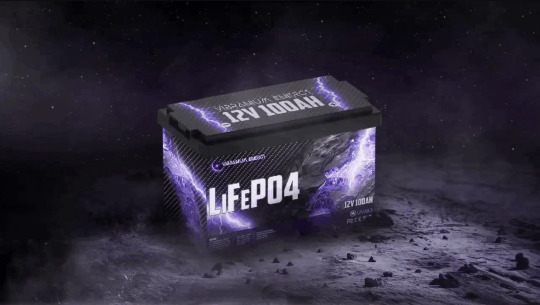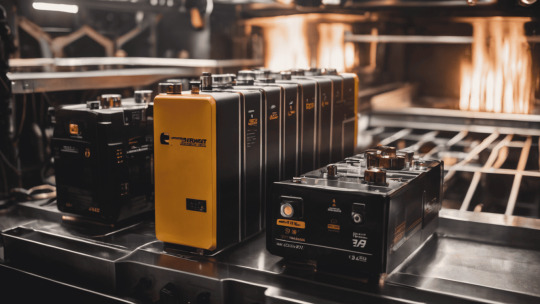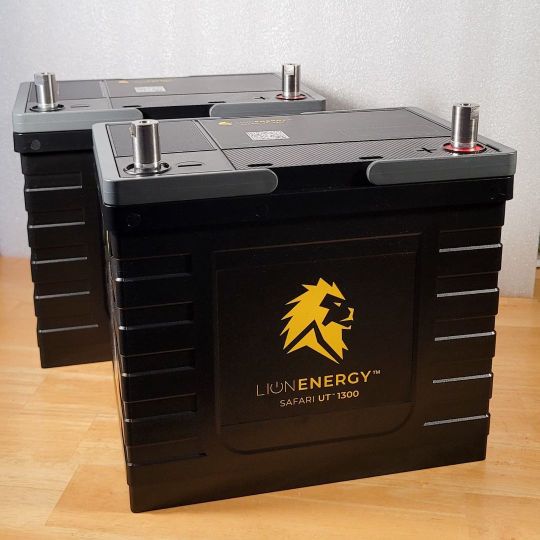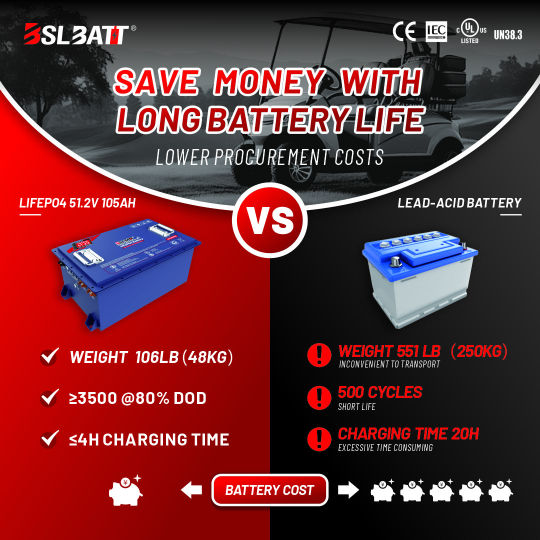#rvbattery
Explore tagged Tumblr posts
Text

BSLBATT's CTO, Linpeng Taojun, shared his core value story, which has made a positive impact on our promotion of energy revolution and technological innovation.
Please continue to focus on our core values.
https://www.lithium-battery-factory.com
#EnergyRevolution#Sustainability#LiFePO4#ForkliftBattery#EnergyStorage#GolfCarBattery#RVBattery#MarineBattery#AWPBattery
0 notes
Text
RV Battery Hibernation: Best Practices for Indoor Storage

When it comes to storing your RV indoors for extended periods, taking good care of your RV battery is essential. Proper battery storage can significantly impact its longevity and performance. This is especially crucial if you're a proud owner of an RV camper in Michigan, where the seasons can be harsh. To ensure that your RV battery remains in top shape during hibernation, let's explore the best practices for indoor storage. And if you're in Michigan, don't forget to consider RV camper maintenance services to make your RV maintenance journey smoother.
Understanding the Importance of RV Battery Storage
Your RV battery plays a critical role in powering various systems within your vehicle. This includes lights, appliances, and even your RV's engine in some cases. During periods of storage, like the winter months in Michigan, where the temperatures can drop considerably, it's essential to take special care of your battery to prevent damage and ensure it's ready for use when you hit the road again.
Best Practices for RV Battery Hibernation
Disconnect and Remove the Battery: The first step in preparing your RV battery for hibernation is to disconnect it. This prevents any parasitic loads from slowly draining the battery. After disconnecting, remove the battery from your RV and place it in a cool, dry, and well-ventilated location. In Michigan, where temperatures can drop below freezing, storing it in a garage or basement is a good idea.
Clean and Inspect the Battery: Before storage, make sure your battery is clean and free of corrosion. A mixture of baking soda and water can be used to clean the terminals and connections. Inspect the battery for any visible damage, and if you notice any, consider getting it checked or replaced before storage.
Charge the Battery: It's a good practice to fully charge your battery before hibernation. A battery maintainer or trickle charger can help keep the battery at its optimum charge level during storage. In Michigan, where long periods of inactivity are common, this step is crucial.
Maintain Proper Ventilation: Ensure that the storage area is well-ventilated to prevent the accumulation of harmful gases. Lead-acid batteries, in particular, can release hydrogen gas, which is highly flammable. Adequate ventilation helps dissipate any gas that may be produced.
Avoid Extreme Temperatures: Batteries do not fare well in extreme temperatures. Avoid exposing your battery to excessive heat or cold. In Michigan, this is especially important during the winter when extreme cold can damage the battery. If possible, store the battery in a location with a consistent temperature.
Regular Check-Ups: Even during storage, it's a good idea to periodically check the battery's charge level. If you have a battery maintainer connected, it should automatically maintain the charge. However, it's essential to monitor it to ensure that everything is functioning correctly.
Protect the Battery: To prevent the battery from being damaged by dirt, moisture, or any potential accidental impact, consider using a battery storage box or a battery blanket. These protective measures can help extend the battery's lifespan.
RV Camper Maintenance Services in Michigan
While you're following these best practices for RV battery hibernation, it's an excellent time to think about scheduling maintenance for your RV camper in Michigan. Seasonal maintenance is crucial to keep your RV in tip-top condition, especially if you're storing it for extended periods.
Here are some key maintenance services to consider:
Winterization: Michigan winters can be harsh, so proper winterization is essential to prevent damage to your plumbing, appliances, and RV systems. An RV camper maintenance service can help you prepare your vehicle for the cold months and de-winterize it when you're ready to hit the road again.
Roof Inspection and Sealing: Leaks are a common issue for RVs, and Michigan's changing weather can exacerbate this problem. Regular roof inspections and resealing can prevent costly water damage.
Tire Maintenance: Tires can deteriorate over time, even while in storage. Proper inflation and inspection can ensure they're safe and ready for your next adventure.
Interior and Exterior Cleaning: Mold and mildew can develop during long storage periods. Professional cleaning services can help keep your RV fresh and clean.
Appliance and System Check: RV campers have various appliances and systems that need regular maintenance. Professionals can inspect and service your furnace, water heater, and other components to ensure they're functioning correctly.
By taking a proactive approach to RV maintenance and battery storage, you can enjoy peace of mind and a longer lifespan for your battery and your RV. If you're in Michigan, don't hesitate to reach out to RV camper maintenance services to assist you in these endeavors. It's an investment that will pay off when you're ready to hit the road again.
In conclusion, proper RV battery hibernation and maintenance services are essential to keep your RV in excellent condition during long periods of indoor storage, especially in a state like Michigan with its varying weather conditions. Following the best practices mentioned in this guide, you can rest assured that your battery will be ready to power your adventures when the time comes.
#rvrepair#camperrepair#nageltrailerrepair#rvrenovation#motorhomes#motorhomelife#rv#rvlife#rving#motorhome#rvbattery
1 note
·
View note
Text
How to Tell if Your RV Battery is Bad: Signs, Testing, and Solutions
Embarking on an RV adventure through the diverse landscapes of America is a dream come true for many. From the majestic mountains of Colorado to the serene lakes of Minnesota, RV enthusiasts revel in the freedom of the open road. However, a reliable source of power is essential to make the most of your journey, and that's where your RV battery plays a crucial role. But what happens when your trusty power source starts to show signs of wear and tear? In this comprehensive guide, we'll explore the telltale signs of a bad RV battery, testing methods to diagnose its condition, and possible solutions to keep your RV adventures powered up.
Understanding RV Batteries
Before diving into the indicators of a failing RV battery, it's essential to understand the types of batteries commonly used in recreational vehicles. RVs primarily use deep-cycle batteries, designed to provide a steady and sustained flow of power over an extended period, in contrast to the short bursts of high current needed for starting batteries in automobiles.
Here are the main types of RV batteries:
Flooded Lead-Acid Batteries (FLA): These are the most common RV batteries. They require regular maintenance to check and replenish the electrolyte levels (distilled water) and must be handled with care to prevent spills.
Sealed Lead-Acid Batteries (SLA): SLA batteries are a subtype of lead-acid batteries. They are sealed and maintenance-free, meaning you don't need to check or refill electrolyte levels.
AGM (Absorbent Glass Mat) Batteries: AGM batteries are another type of sealed lead-acid battery. They use an absorbent glass mat to hold the electrolyte, making them spill-proof and maintenance-free. AGM batteries are known for their durability and efficiency.
Lithium-Ion Batteries: Lithium-ion batteries are becoming increasingly popular in RVs due to their long lifespan, high energy density, and lightweight construction. They are more expensive upfront but offer several advantages, including longer life and faster charging.
Signs of a Bad RV Battery

Dim or Flickering Lights: One of the most noticeable signs of a failing RV battery is dim or flickering interior lights. If your lights are noticeably less bright or flicker when you turn them on, it may indicate a weakened battery.
Difficulty Starting the RV: If your RV is slow to start or fails to start altogether, it's a clear indicator of a battery problem. This can be particularly frustrating when you're eager to hit the road.
Inconsistent Power Supply: A bad RV battery may lead to inconsistent power output. You might experience intermittent power interruptions or find that your appliances and devices don't operate as expected.
Sulfur or Rotten Egg Odor: FLA batteries, when overcharged or discharged repeatedly, can produce a sulfur or rotten egg-like odor. If you detect this smell near your battery, it could be a sign of a problem.
Visible Damage or Corrosion: Inspect your battery for visible signs of damage or corrosion. Cracked or bulging battery cases, loose or corroded terminals, or leaks are all indications of battery trouble.
Reduced Cranking Sound: When starting your RV's engine, you might notice a slower cranking sound. This can be a sign that the battery lacks the necessary power to turn over the engine.
Shortened Battery Life: If your RV battery isn't lasting as long as it used to, it's a strong indicator that it's nearing the end of its lifespan. Most RV batteries have a typical lifespan of three to five years, although this can vary based on factors such as usage and maintenance.
Low Voltage Reading: Using a multimeter, you can measure the voltage of your RV battery. A fully charged 12-volt battery should read around 12.6 to 12.8 volts. If it consistently reads below this range, it may be time to replace the battery.
Slow Charging: If your battery takes an unusually long time to recharge or doesn't reach a full charge, it may be failing and losing its ability to hold a charge effectively.
Clicking Sound When Starting: When you turn the ignition key and hear a rapid clicking sound without the engine starting, it often indicates a weak battery unable to provide the necessary power.
Testing Your RV Battery
To determine if your RV battery is indeed failing, you can perform some tests to assess its condition:
Voltage Test: Use a digital multimeter to measure the voltage of your RV battery. With the battery disconnected from any loads or charging sources, connect the multimeter's positive (red) probe to the battery's positive terminal and the negative (black) probe to the negative terminal. A fully charged 12-volt battery should read around 12.6 to 12.8 volts. If it reads significantly lower, the battery may be weak or discharged.
Load Test: A load test helps assess the battery's ability to deliver power under load. You can use a load tester for this purpose. Connect the load tester to the battery following the manufacturer's instructions, and apply a load for about 15 seconds. If the voltage drops significantly during the test or the battery cannot maintain the load, it's likely time for a replacement.
Hydrometer Test (For FLA Batteries): This test is specific to flooded lead-acid batteries. Use a hydrometer to measure the specific gravity of the battery's electrolyte in each cell. If you notice significant variations in specific gravity readings between cells, it could indicate an imbalance and a failing battery.
Solutions for a Failing RV Battery
If your tests confirm that your RV battery is indeed failing, you have several options:
Battery Reconditioning: In some cases, a failing battery can be reconditioned using specialized equipment and procedures. This process can help remove sulfation and extend the battery's life, but it's not always effective and may not fully restore the battery to its original condition.
Battery Replacement: If your battery is old, severely damaged, or testing consistently weak, the best solution may be to replace it with a new one. When replacing your battery, consider upgrading to a higher-quality battery type, such as AGM or lithium-ion, which can offer improved performance and longevity.
Proper Maintenance: To prevent future battery issues, implement proper battery maintenance practices. This includes regular inspection, cleaning terminals, checking electrolyte levels (for FLA batteries), and using a battery maintainer or trickle charger when storing your RV for extended periods.
Charging System Check: Ensure that your RV's charging system (converter/charger or inverter/charger) is functioning correctly. Faulty charging equipment can lead to battery problems, so it's crucial to address any issues promptly.
Your RV battery is the lifeblood of your adventures, providing the power needed to light your way, keep your appliances running, and ensure your comforts on the road. Recognizing the signs of a failing RV battery and knowing how to test its condition are essential skills for any RV enthusiast. By staying vigilant and addressing battery issues promptly, you can embark on your next RV journey with confidence.
0 notes
Text
Should You Keep Your RV Plugged In All the Time? Pros, Cons, and Tips
Thinking of leaving your RV plugged in 24/7? It’s a common question, and there are some good reasons to keep it powered up – but a few important drawbacks, too. Let’s take a look at the pros and cons so you can decide what works best for your setup. Why Keep Your RV Plugged In? There are a few reasons you might want to stay plugged in: Living Full-Time in Your RV: If your RV is your home,…
#Boondocking#CampingReady#ColdWeatherRV#FullTimeRV#RVAppliances#RVBatteries#RVElectrical#RVFireSafety#RVFridge#RVHeat#RVLife#RVMaintenance#RVPluggedIn#RVPower#RVStorage#RVTips#TrickleCharger#WinterizeRV
0 notes
Text

⚡ Power Up with Vibranium Energy! ⚡
Looking for reliable LiFePO4 batteries? Vibranium Energy has you covered! Our high-performance batteries are perfect for:
✅ RVs & Campers – Enjoy off-grid adventures with long-lasting power. ✅ Solar Energy Storage – Store renewable energy efficiently. ✅ Marine & Boats – Dependable power for your water journeys. ✅ Golf Carts & E-Bikes – Upgrade to a longer-lasting battery. ✅ Home Backup Systems – Be prepared for power outages.
🔋 Vibranium Energy – Your Trusted Battery Store in the USA! 🇺🇸
📞 Call us today: (718) 219-3141 💡 Power your world with confidence!
#VibraniumEnergy #LiFePO4 #RVBattery #SolarPower #OffGridLiving
1 note
·
View note
Text
How Long Will RV Furnace Run On Battery & Average Duration: All You Need To Know!
#rvbattery #lifepo #autobattery #boatbattery #battery #golfcartbattery #marinebattery #deepcyclebattery #batteries #solarbatteries #batterytesting #lithium #lithiumbattery #batterytips #batterymaintenance #automotivebattery #recreationalvehicle #rv #DIY
Are you tired of worrying about how long will RV furnace run on battery? RV furnace batteries are crucial for camping and RV living because they provide heat inside. These batteries operate the heater and keep your vehicle warm in the winter. Hey adventurers! It’s frustrating to use my RV’s heater to be warm in the outdoors and have it drain the battery faster than expected. I had it last winter…

View On WordPress
0 notes
Text
MeritSun 12V/24V LCD LiFePO4 Battery,View your battery data anytime, anywhere!
To watch more professional product videos, please follow us on YouTube:https://lnkd.in/eZmyRtc5
MeritSun, The Best Power in the sun🌞 Official website:www.meritsunpower.com
#solarpower#powerwall#meritsun#meritech#solarbattery#solarsystem#batterypack#12Vbattery#solar#rvbattery#rv life#camping#Meritech#batteries#lithiumbattery#outdoors#trip#traveling
1 note
·
View note
Text
About BatteryBoss
BatteryBoss was founded with a simple mission: to provide the best possible information about batteries to help people make the best possible decisions for their needs. We believe that everyone deserves access to accurate and unbiased information, and that's what we aim to provide with our reviews.
We take a comprehensive approach to our reviews, testing products in a variety of real-world scenarios to get a true sense of their performance. We also interview experts and gather feedback from users to get a well-rounded picture of each battery. Our goal is to provide all the information you need to make an informed decision, and we stand behind our reviews 100%.
If you're looking for the best possible information on batteries, you've come to the right place
CONTACT:
Address: 4075 Park Blvd, Suite 102-121, San Diego, CA 92103
Phone: +1(760) 227-0590
Website: https://batteryboss.org/
Facebook: https://www.facebook.com/batterybossorgg
Twitter: https://twitter.com/batterybossorg
Pinterest: https://www.pinterest.com/batterybossorgg/
#batteryboss#replacementbatteries#carbattery#batterycharger#rvbattery#deepcyclebatteries#slabatteries#upsbatteries
1 note
·
View note
Text

RV Battery Disconnect Switch Market
We surveyed the RV Battery Disconnect Switch manufacturers, suppliers, distributors and industry experts on this industry, involving the sales, revenue, demand, price change, product type, recent development and plan, industry trends, drivers, challenges, obstacles, and potential risks.
Download Free Research Report Sample PDF: https://cutt.ly/8VNAM7U
#rv#rvbattery#rvbatterymarket#disconnectswitch#rvbatterydisconnectswitchmarket#rvbatterydisconnectswitch#switch#switchmarket#rotaryswitch#statsmarketresearch
0 notes
Photo

Big savings on lithium! Now through early October, the Lion Energy UT 1300 105ah lithium battery will be reduced to $840. Save an additional 15% and drop the price to $799 when you use my referral code, "CD". I ihad tow of these nstalled in my 2021 T@b 320 in April by Austin at @nucamprv and have been very pleased with the performance. #lithium #rvbattery #rvupgrades #rvmods #rvelectrical #tab320 #tab320boondock #campvibes #camping #teardropcamper #teardroptrailer #tabtrailers #gorving #boondocking #offgridtrailers #offgridliving https://www.instagram.com/p/CULTFW2Jg8H/?utm_medium=tumblr
#lithium#rvbattery#rvupgrades#rvmods#rvelectrical#tab320#tab320boondock#campvibes#camping#teardropcamper#teardroptrailer#tabtrailers#gorving#boondocking#offgridtrailers#offgridliving
0 notes
Text
A Road Trip In An RV: How To Prepare
Are you excited to know how it feels like having a road trip in an RV and how to prepare for it? This article explains everything about it.

Read More Here 👉 http://bitly.ws/fQ4H
#rvbattery#RVRefrigerators#RVAirConditioners#rvawnings#rvappliances#RVKitchenEssentials#RVFurnishings#patiochairs#PatioMats
0 notes
Text

Maximize cost savings and extend life with BSLBATT golf cart LiFepo4 batteries! I know saving money and ensuring long-term use are your top priorities. That's why BSLBATT golf cart batteries are the perfect solution for you. Offering an industry-leading 5-year or 10,000-hour warranty, you save 80% of your money over 5 years, allowing you to drive worry-free and enjoy unparalleled reliability.
0 notes
Photo

Fabian did a great job building a new rack for our new batteries. They are bigger and better than the ones that came with the RV. Check out our new batteries on our YouTube channel Proceeding Onward in America and see how we hooked them up! * * * #proceedingonwardinamerica #poa #rvbattery #fulltimerv #fulltimervers #fulltimerving #rv #rvlife #rvliving #rvorganization #rvrenovation https://www.instagram.com/p/B_IcjO2J6m5/?igshid=ihhnj2oelrbq
#proceedingonwardinamerica#poa#rvbattery#fulltimerv#fulltimervers#fulltimerving#rv#rvlife#rvliving#rvorganization#rvrenovation
0 notes
Text
How to Charge RV Batteries with a Battery Charger
The call of the open road, the freedom to explore the great American outdoors, and the comfort of home on wheels — that's the allure of RVing. Yet, to keep the wheels turning and the comforts running, you need a reliable source of power, and that's where your RV batteries come into play.
Whether you're boondocking in the wilderness or parked at a campsite, there may come a time when your RV batteries need a recharge. In this comprehensive guide, we'll explore the ins and outs of charging RV batteries with a battery charger, ensuring you have the power you need for your adventures.
Understanding Your RV Batteries
Before diving into the charging process, it's essential to understand the batteries in your RV. RVs typically use one or more deep-cycle batteries, which are designed to provide a steady and sustained flow of power over extended periods. These batteries are distinct from starting batteries used in automobiles, which are optimized for short bursts of high current to start the engine.
There are different types of RV batteries, including:
Flooded Lead-Acid Batteries (FLA): These are the most common and traditional type of RV batteries. They require regular maintenance to check and replenish the electrolyte levels (distilled water) and must be handled with care to prevent spills.
Sealed Lead-Acid Batteries (SLA): SLA batteries are a subtype of lead-acid batteries. They are sealed and maintenance-free, which means you don't need to check or refill electrolyte levels.
AGM (Absorbent Glass Mat) Batteries: AGM batteries are another type of sealed lead-acid battery. They use an absorbent glass mat to hold the electrolyte, making them spill-proof and maintenance-free. AGM batteries are known for their durability and efficiency.
Lithium-Ion Batteries: Lithium-ion batteries are becoming increasingly popular in RVs due to their long lifespan, high energy density, and lightweight construction. They are more expensive upfront but offer several advantages, including longer life and faster charging.
When to Charge Your RV Batteries
Knowing when to charge your RV batteries is crucial to maintaining a reliable power supply during your travels. Here are some common scenarios when you may need to charge your RV batteries:
After Boondocking: Boondocking or dry camping without electrical hookups can quickly deplete your RV batteries. When your battery voltage drops significantly (typically below 50% state of charge), it's time to recharge.
During Storage: If you store your RV for extended periods, it's essential to maintain your batteries. Leaving them unattended without a charge can lead to sulfation, which can significantly reduce their lifespan.
After Extended Use: If you've been using power-hungry appliances, running your furnace, or relying on your battery for extended periods, you may need to recharge the batteries sooner.
As Part of Routine Maintenance: Regularly checking and maintaining your RV batteries includes ensuring they are adequately charged. Routine maintenance helps extend battery life and ensures reliable performance.
Choosing the Right Battery Charger
Before you can charge your RV batteries, you'll need a suitable battery charger. There are various types of battery chargers available, each with its features and capabilities. Here are some considerations when choosing a battery charger for your RV:
Charger Type: There are two primary types of battery chargers: traditional chargers and smart chargers. Smart chargers, also known as microprocessor-controlled chargers, are more advanced and offer features like multiple charging stages, automatic voltage adjustment, and the ability to charge different battery types (AGM, flooded lead-acid, lithium-ion, etc.).
Voltage and Capacity: Ensure that the charger's voltage output matches the voltage of your RV batteries (usually 12 volts for most RVs). Additionally, consider the charger's capacity, which determines how quickly it can recharge your batteries.
Ampere Rating: The ampere rating of a charger indicates its charging speed. A higher ampere rating means faster charging. However, charging too quickly can damage batteries, so it's essential to choose a charger with an appropriate ampere rating for your battery's capacity.
Safety Features: Look for safety features such as overcharge protection, reverse polarity protection, and short-circuit protection to prevent damage to your batteries and the charger.
Portability: Consider whether you need a portable charger that you can take with you on your RV trips or if a stationary charger at your home base will suffice.
Battery Type Compatibility: Make sure the charger is compatible with the type of batteries you have in your RV (e.g., AGM, flooded lead-acid, or lithium-ion).
How to Charge RV Batteries with Battery Charger: Step by Step

Once you've selected the right battery charger for your RV batteries, it's time to start the charging process. Here's a step-by-step guide to charging your RV batteries:
Step 1: Safety Precautions
Before you begin, take the following safety precautions:
Turn off all electrical appliances and systems in your RV to prevent any unnecessary power draw.
Ensure good ventilation in the area where you're working, especially if you have FLA batteries that may release gases during charging.
Put on safety glasses and gloves to protect yourself from battery acid and potential sparks.
Step 2: Battery Inspection
Visually inspect your RV batteries to ensure they are in good condition. Look for any signs of damage, leakage, or corrosion on the battery terminals. If you notice any issues, address them before proceeding.
Step 3: Charger Connection
Follow these steps to connect the battery charger to your RV batteries:
Identify the positive (+) and negative (-) terminals on your RV batteries.
Connect the red (positive) charger clamp to the positive terminal of the first battery.
Connect the black (negative) charger clamp to the negative terminal of the same battery.
If you have multiple batteries, repeat the process, connecting the charger to each battery in sequence.
Step 4: Charger Settings
Set your battery charger to the appropriate settings based on your battery type and the charger's instructions. If you're using a smart charger, it may automatically detect the battery type and adjust the settings for you.
Step 5: Charging
Start the charging process by turning on your battery charger. The charger will begin delivering a current to your batteries, gradually bringing them back to their full state of charge.
Step 6: Monitor Progress
Keep an eye on the charging process. Smart chargers often have LED indicators or digital displays that show the charging progress. Traditional chargers may require you to check the voltage periodically with a multimeter.
Step 7: Charge Completion
Once your batteries have reached their full state of charge, the charger should automatically switch to a maintenance or float mode. In this mode, the charger provides a lower voltage to keep the batteries topped off without overcharging them.
Step 8: Disconnect Charger
After the charging process is complete, disconnect the charger from your RV batteries. Start by disconnecting the negative (black) clamp, followed by the positive (red) clamp.
Step 9: Battery Testing
To ensure your batteries are fully charged and in good condition, consider using a battery tester or a multimeter to measure their voltage. A fully charged 12-volt battery should read around 12.6 to 12.8 volts.
Step 10: Maintenance
To maximize the lifespan of your RV batteries, it's essential to perform regular maintenance. This includes checking the battery's water levels (for FLA batteries) and cleaning the terminals to prevent corrosion.
Conclusion: Powering Your RV Adventures
Charging your RV batteries with a battery charger is a straightforward process that ensures you have a reliable power source for your adventures on the open road. Whether you're exploring the vastness of the Grand Canyon, taking in the stunning vistas of the Pacific Coast, or enjoying the tranquility of a lakeside campground, your RV batteries are there to provide the comforts and conveniences of home. By selecting the right charger, following safety precautions, and maintaining your batteries, you can ensure that your RV batteries are always ready to power your next journey into the heart of nature's beauty.
0 notes
Text
MeritSun — keeps you connected during all your RV trips🚙
"Thank you MeritSun for everything! You put more fun in the outside world when I go traveling"our customer said.MeritSun — keeps you connected during all your RV trips🚙
Contact us to develop your mini power station: www.meritsunpower.com
0 notes
Text
Power Consumption
Is your battery bad? Did the manufacturer rip you off? Did the dealer rip you off? Are you going to be able to use your RV without being plugged into shore power? Frustrated and maybe even a little bit angry. It’s how you feel when you burn through RV battery with seemingly little effort. Understanding how much power the individual components, like the lights, TV, fridge, and other features…

View On WordPress
#Boondocking#drycamping#gorving#nuCamp Tab 320#nuCamp Tab Camper#nucamptab#nucamptab320#nucamptab320boondock#powerconsumption#rv electric#rvbattery#rvelectric#rvhacks#rvlife#RVPower#Tab#Tab 320 Boondock#tab320#tab320s#tab400#tabcamper#tabteardrop#tabtrailer#vampingvibes
0 notes